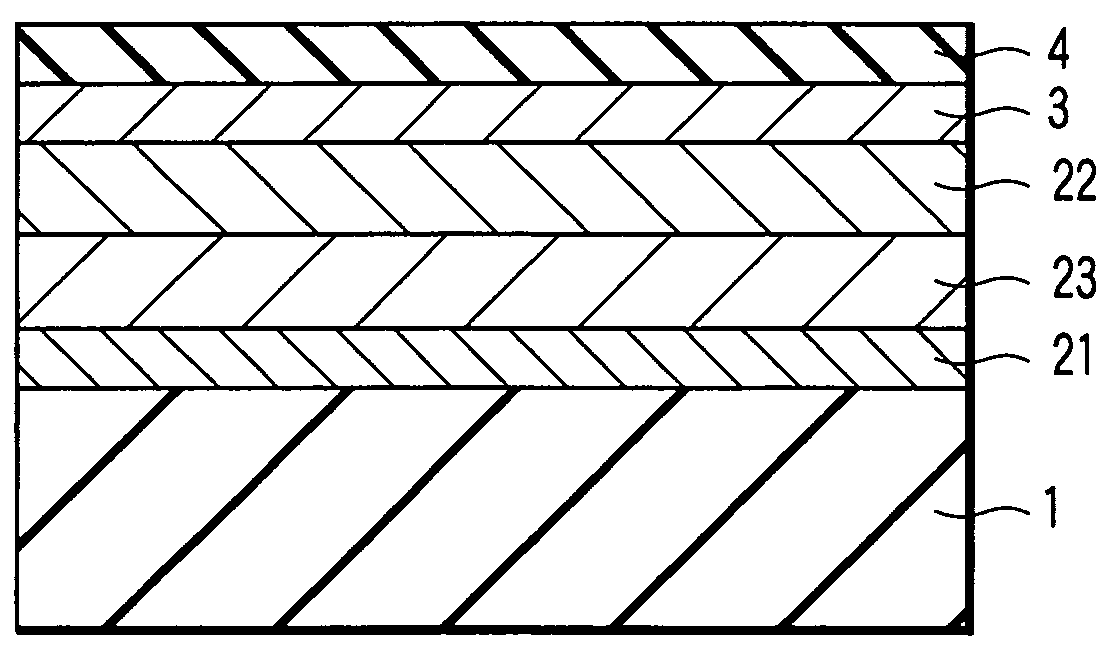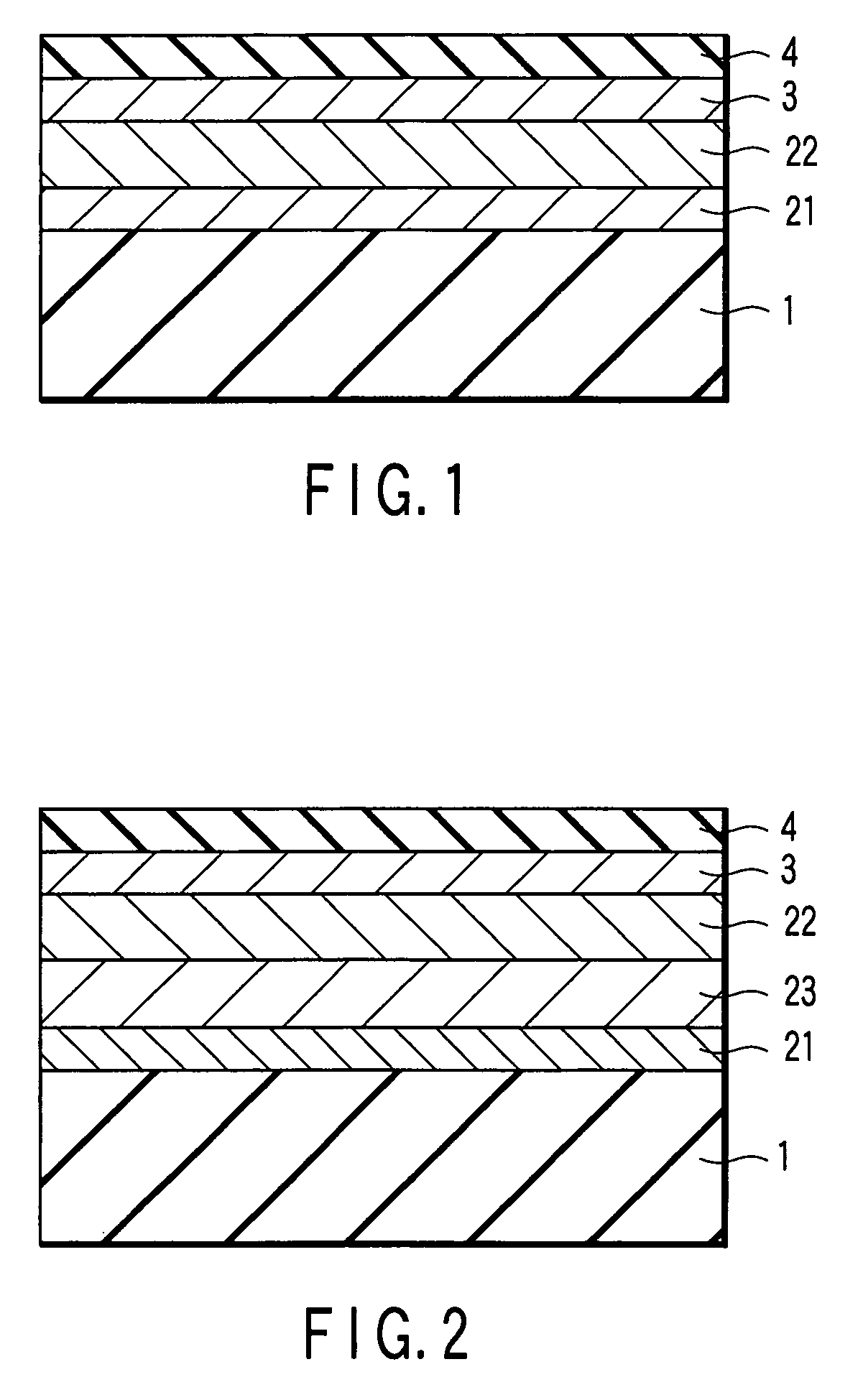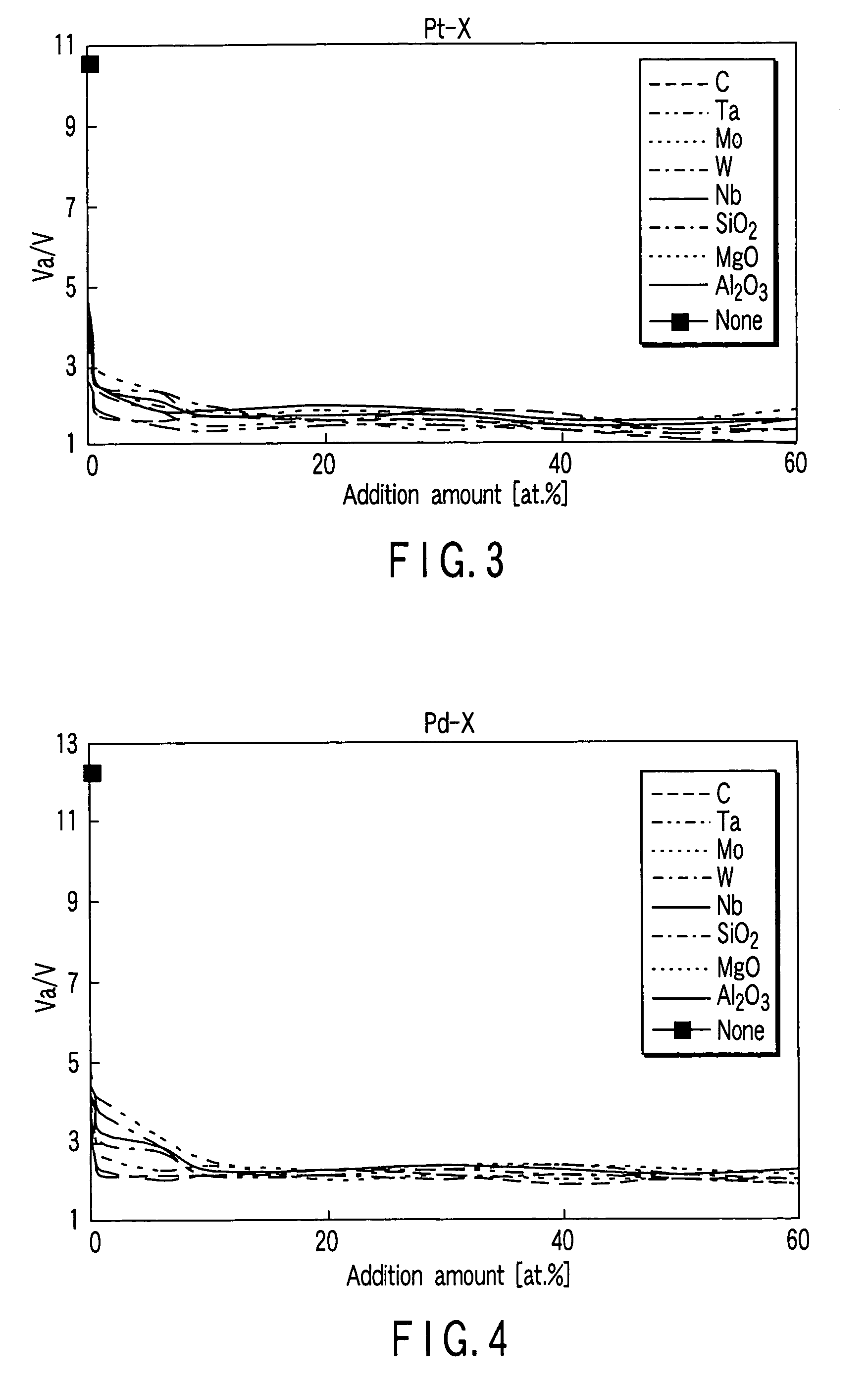Perpendicular magnetic recording medium
- Summary
- Abstract
- Description
- Claims
- Application Information
AI Technical Summary
Benefits of technology
Problems solved by technology
Method used
Image
Examples
example 1
[0069]In this example, a magnetic recording medium shown in FIG. 1 was fabricated.
[0070]A glass disk substrate was used as a substrate 1, and an NiAl layer about 10 nm thick was formed as a seed layer 21.
[0071]An underlayer 22 was formed to have a thickness of about 20 nm by using a material comprising Pt, Pd, Rh, Ag, Au, Ir or Fe of a group A element as a matrix material and 0 to 60 mol % of C, Ta, Mo, W, Nb, Zr, Hf, V, Mg, Al, Zn, Sn, In, Bi, Pb, Cd, SiO2, MgO, Al2O3, TaC, TiC, TaN, TiN, B2O3, ZrO2, In2O3 or SnO2 of a group B element or compound added to the matrix material.
[0072]An FePt layer about 10 nm thick was formed as a magnetic layer 3, and a carbon layer about 10 nm thick was formed as a protective layer 4.
[0073]The magnetic recording medium of this example was fabricated by the following method. A vacuum chamber of a sputtering apparatus was evacuated to 2×10−5 Pa or less, and then film deposition was performed under an Ar atmosphere at 5 Pa. During the film deposition, ...
example 2
[0086]A magnetic recording medium shown in FIG. 1 was fabricated in this Example.
[0087]A glass disk substrate was used as a substrate 1, and an MgO layer about 10 nm thick was formed as a seed layer 21.
[0088]An underlayer 22 was formed to have a thickness of about 20 nm by using a material comprising Pt or Pd of a group A element as a matrix material and 10 mol % of C, Ta, Mo, W, Nb, SiO2, MgO or Al2O3 of a group B element or compound added to the matrix material.
[0089]A magnetic layer 3 was formed to have a thickness of about 5 nm by using a material comprising FePt as a main component and 0 to 50 mol % of C, Ta, Mo, W, Nb, SiO2, MgO or Al2O3 added to the main component.
[0090]A carbon layer about 10 nm thick was formed as a protective layer 4.
[0091]The Va / V values of magnetic recording media each having an underlayer in which the addition amount of a group B element or compound (C, Ta, Mo, W, Nb, SiO2, MgO, or Al2O3) was 10 mol % with respect to a group A element (Pt or Pd), and an...
example 3
[0128]In this example, a magnetic recording medium shown in FIG. 2 was fabricated.
[0129]A glass disk substrate was used as a substrate 1, and an NiAl layer about 10 nm thick was formed as a seed layer 21.
[0130]A crystal orientation layer 23 was formed to have a thickness of about 20 nm by using a material comprising Cr and 0 to 60 at % of Ti, Ni, Co, Cu or Zn added to Cr.
[0131]An underlayer 22 was formed to have a thickness of about 5 nm. The underlayer comprises Pt (the group A) and 20 mol % of SiO2 (the group B).
[0132]A magnetic layer 3 was formed to have a thickness of about 5 nm. The magnetic layer comprises Fe45Pt50Cu5 ternary alloy and 6 at % of Mo added thereto.
[0133]A carbon layer about 10 nm thick was formed as a protective layer 4.
[0134]The XRD profile of each of media having various Cr—X crystal orientation layers (X was Ti, Ni, Co, Cu, or Zn) with different amount of the additive element was measured. Then, (111) reflection and (001) reflection of each of FePt and Pt wer...
PUM
 Login to View More
Login to View More Abstract
Description
Claims
Application Information
 Login to View More
Login to View More - Generate Ideas
- Intellectual Property
- Life Sciences
- Materials
- Tech Scout
- Unparalleled Data Quality
- Higher Quality Content
- 60% Fewer Hallucinations
Browse by: Latest US Patents, China's latest patents, Technical Efficacy Thesaurus, Application Domain, Technology Topic, Popular Technical Reports.
© 2025 PatSnap. All rights reserved.Legal|Privacy policy|Modern Slavery Act Transparency Statement|Sitemap|About US| Contact US: help@patsnap.com



